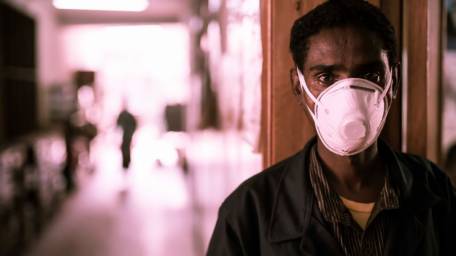-
Tips for becoming a good boxer - November 6, 2020
-
7 expert tips for making your hens night a memorable one - November 6, 2020
-
5 reasons to host your Christmas party on a cruise boat - November 6, 2020
-
What to do when you’re charged with a crime - November 6, 2020
-
Should you get one or multiple dogs? Here’s all you need to know - November 3, 2020
-
A Guide: How to Build Your Very Own Magic Mirror - February 14, 2019
-
Our Top Inspirational Baseball Stars - November 24, 2018
-
Five Tech Tools That Will Help You Turn Your Blog into a Business - November 24, 2018
-
How to Indulge on Vacation without Expanding Your Waist - November 9, 2018
-
5 Strategies for Businesses to Appeal to Today’s Increasingly Mobile-Crazed Customers - November 9, 2018
Tuberculosis ranks alongside HIV as leading global infectious killer
The WHO released the Global Tuberculosis Report 2015 on Wednesday, giving a snapshot of how far the worldwide health community has come in combating TB.
Advertisement
The spread of drug-resistant strains of TB is a key concern, combined with the need for new drug treatments and better access to care for those in need, said the document.
And “more than half of the world’s TB cases (54 per cent) occurred in China, India, Indonesia, Nigeria and Pakistan”, it said.
Global advances included the achievement of the MDG that called for halting and reversing TB incidence by 2015.
Despite the encouraging news, TB is still one of the leading causes of death around the world, and 1.5 million people died from the disease in 2014.
This year’s report describes higher global totals for new TB cases (9.6. million) than in previous years.
While, the number of new and relapse TB cases notified in India reached 1.61 million in 2014, a 29 per cent increase compared with 1.24 million in 2013, in 2014, public sector medical college hospitals in India alone reported 176,000 TB cases, the report found. Unfortunately, most of the XDR TB cases in 2014 were notified from India (1262, up from 392 in 2013), Ukraine (657), South Africa (562), Belarus (431), and Kazakhstan (318). “We are still facing a burden of 4,400 people dying every day, which is unacceptable in an era when you can diagnose and cure almost every person with TB”, he said.
The World Health Organization said 43 countries reported cure rates for MDR-TB patients of more than 75 per cent. However, global data shows an average cure rate of only 50 per cent for treated MDR-TB patients.
The federal government had previously announced an extra $15 million for TB treatment in Papua New Guinea and $30 million to support work by partnerships to development better diagnosis and medication for the disease.
The WHO’s Global Tuberculosis Report estimated that the annual incidence rate in SA was 834 per 100,000 population; while Lesotho’s stood at 852 per 100,000 for 2014. Forty-three countries reported cure rates for MDR-TB patients of more than 75%.
The report covers data from 205 countries and territories on all aspects of TB that includes drug-resistant forms, research and development and financing.
Most deaths from tuberculosis could be prevented, researchers said, but detection and treatment aren’t happening fast enough because of gaps in funding. “The End TB Strategy, adopted by all WHO Member States, serves as a blueprint for countries to reduce TB incidence by 80% and TB deaths by 90% and to eliminate catastrophic costs for TB-affected households by 2030”, according to WHO.
Advertisement
“From 2016, the global goal will shift from controlling TB to ending the global TB epidemic”.





























